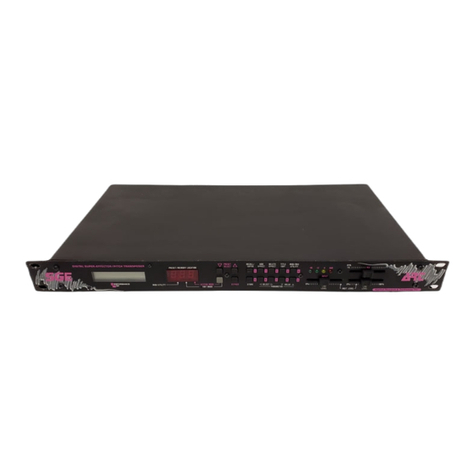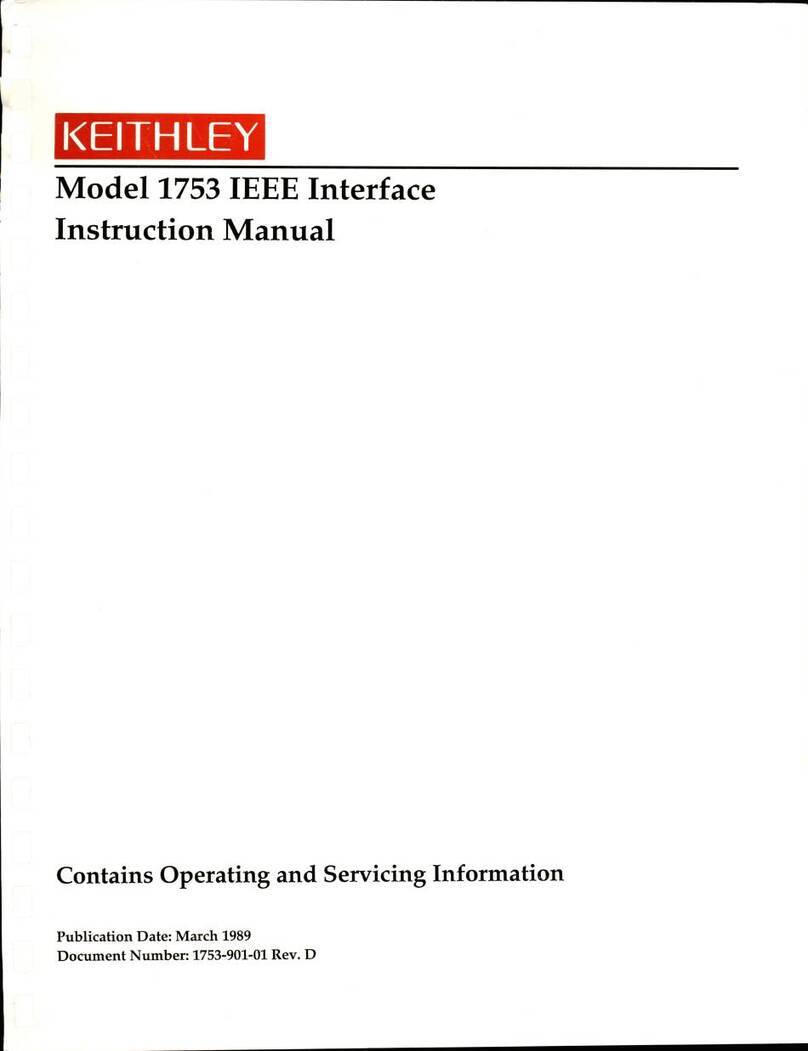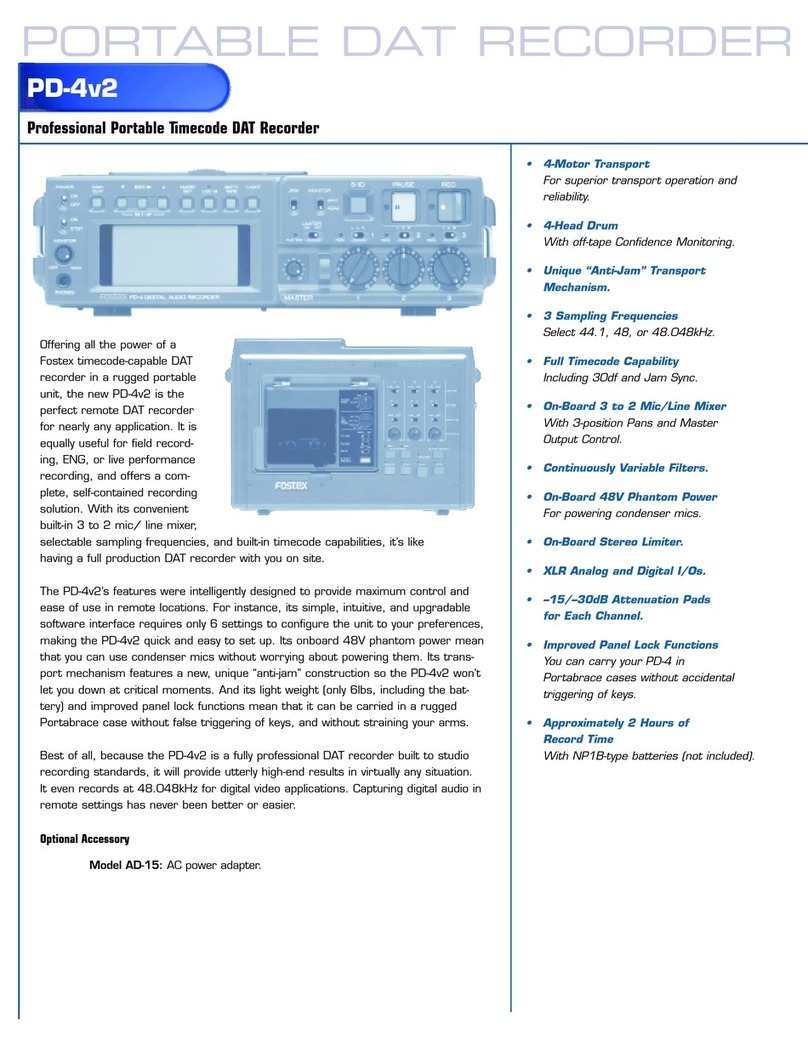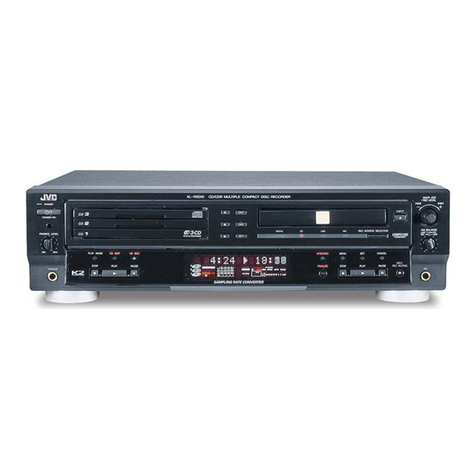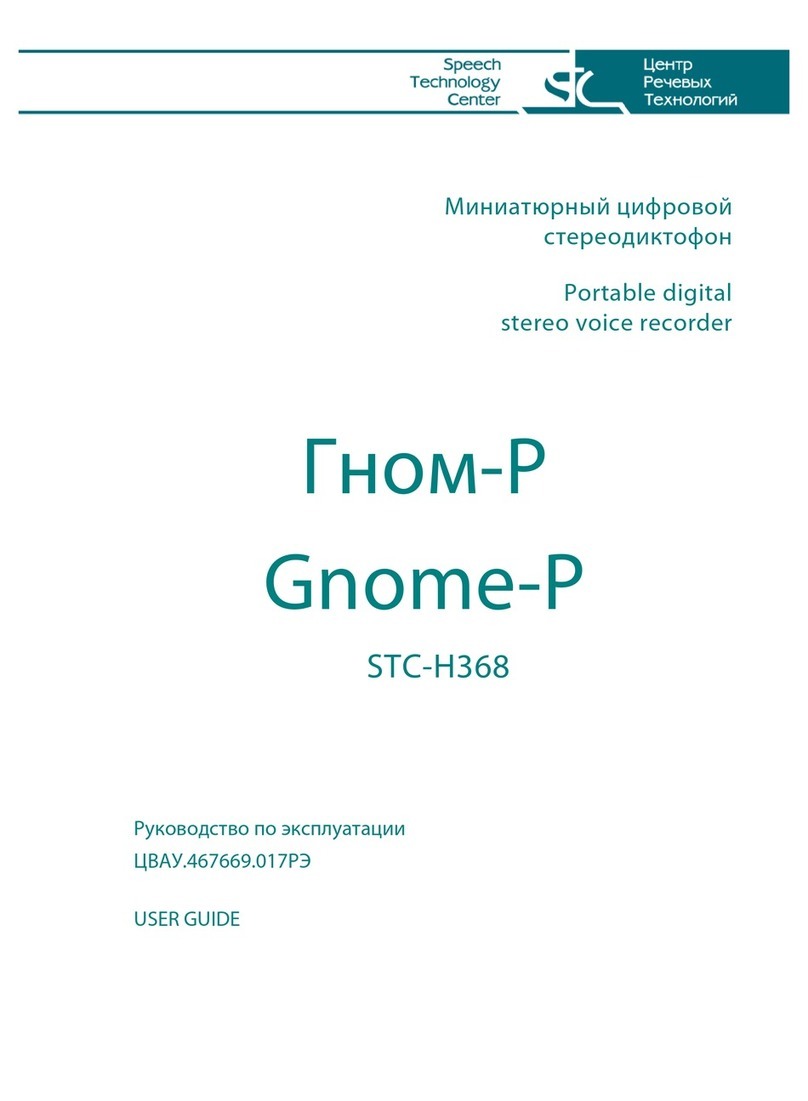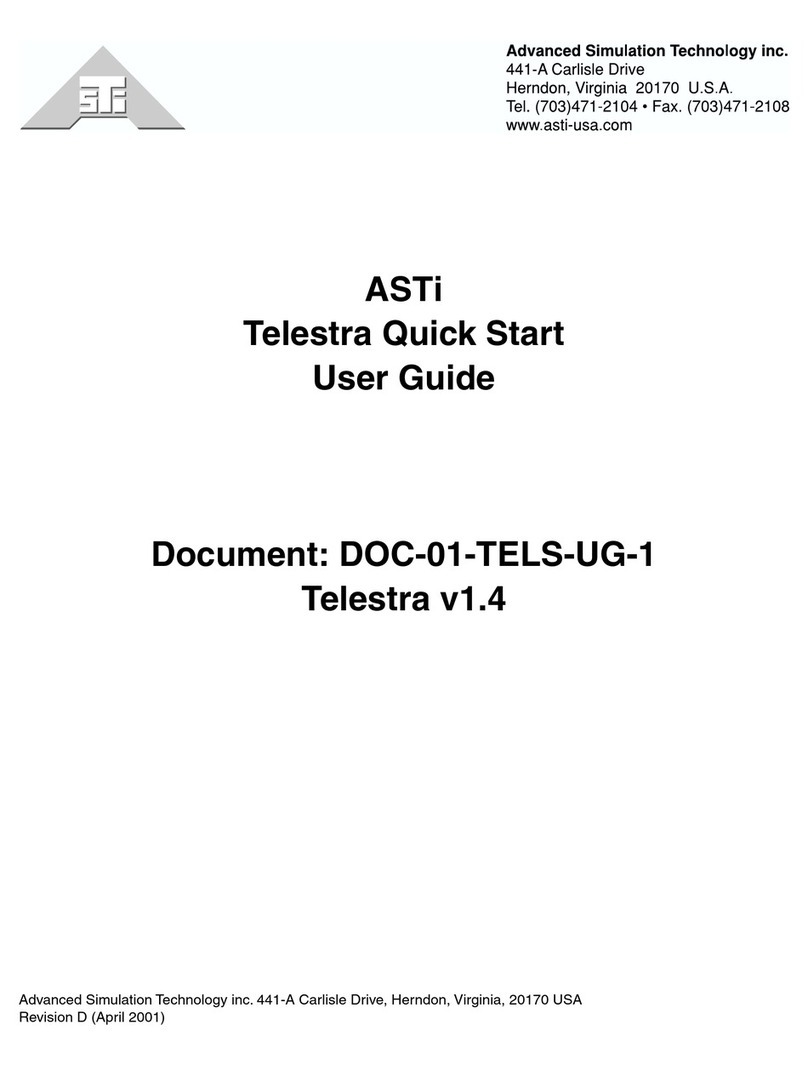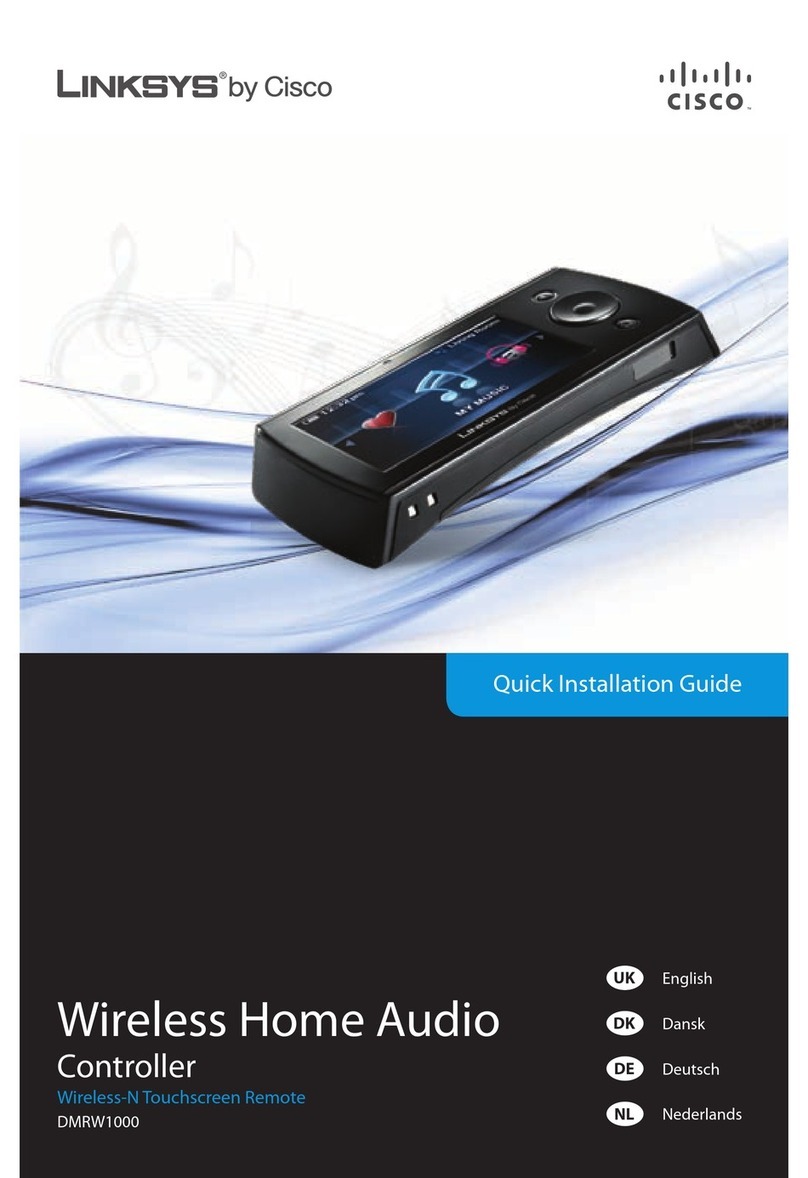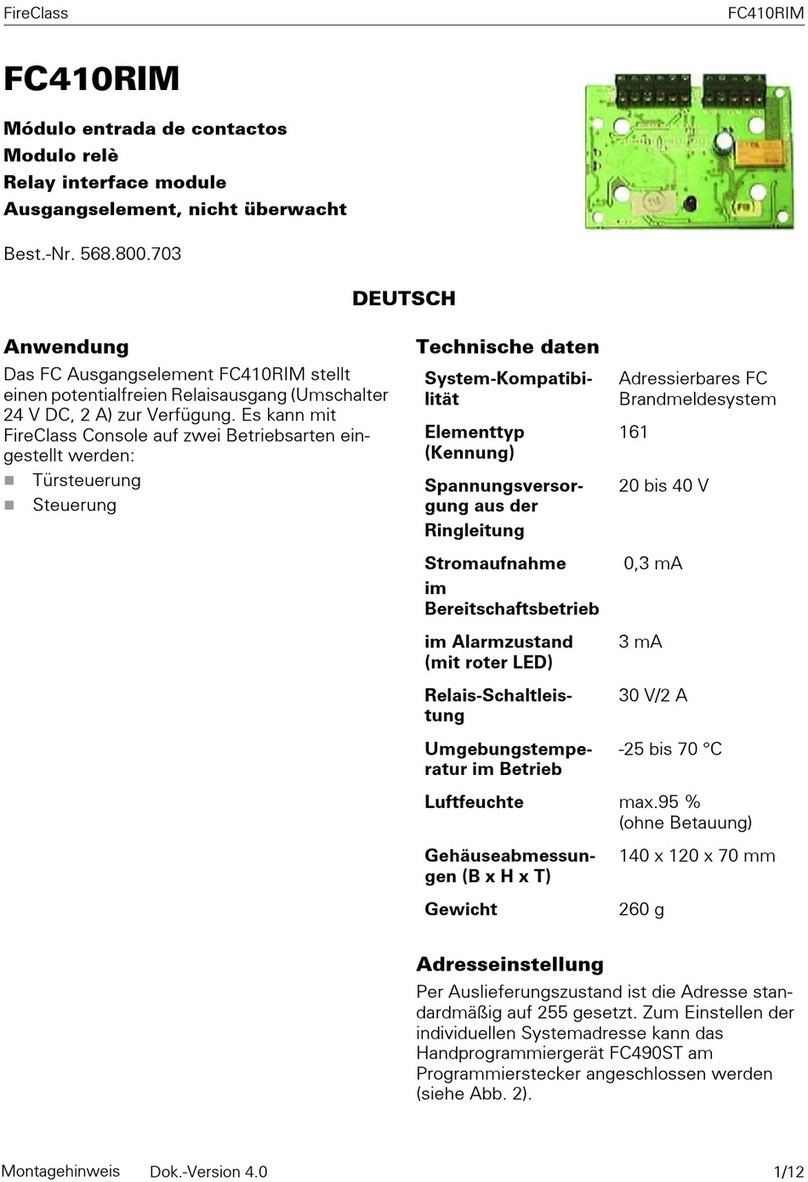Gilian LFS-113 User manual

LFS-113
Dual Mode Low Flow Air Sampler
1–350 cc/min. Constant Pressure
5–200 cc/min. Constant Flow
LOW FLOW SAMPLER
Patent Pending
MODEL LFS-113DC
TIME (MIN)
FLOW ADJ
DUAL
MODE
S/N–
PN 800098–
ON
OFF
B
F
Made in USA
LISTED 17G9
MODEL LFS-113D / LFS-113DC
®
Personal Air Sampler
Intrinsically Safe Portable Air Sampling Pump for use in
Hazardous locations: Class I Groups A,B,C,D; Class II
Groups E,F,G; Class III. Temperature Code T3.
WARNING
Substitution of components may impair Intrinsic Safety.
Use only with UL Listed Portable Air Sampling Pump
Battery Pack.
INSTRUCTION MANUAL
© 1999, Sensidyne, Inc.
Document No. F-PRO-1725, Rev A
Sensidyne, Inc.
16333 Bay Vista Drive • Clearwater, FL 33760
800-451-9444 • 727-530-3602
FAX 727-539-0550

NOTE: Please read all warnings and instructions before operating this unit. Failure to follow these
instructions and procedures can result in permanent damage to the equipment.
WARNING:
ThisunitisdesignedspecificallyforusewithGilianLFS-113,UL,and SCS intrinsicallysafebattery
packsandequipment.Theunitshouldonlybeoperatedin environmentsthattheunit'sintrinsicsafety
labeling permits. Do not operate in excessive chemical or water vapor atmospheres. Do not charge
sampler outdoors or in a damp environment. Use specified Gilian chargers only when recharging the
battery system. Use of any other charger may short out the battery or cause permanent damage to the
electrical system. Do not leave unit charging for more than 16 hours. Overcharging cells may cause
overheating and subsequent damage to/or decrease in battery life and performance.
Sensidyne, Inc.
16333 Bay Vista Drive • Clearwater, FL 33760
800-451-9444 • 727-530-3602
FAX 727-539-0550
6.0 SPECIFICATIONS
Operating Range: Constant flow mode: 5-200 cc/min., back pressures to 25" H2O
Constant pressure mode: (multi-tube) 1-350 cc/min. with flows adjustable through a
single or multiple tube flow controller.
Pressure Range: backpressure up to 25" H2O
Flow Control: ±5% of set point
BatterySystem:Rechargeable,plugin,4.8V,500mAhNi-cadbatterypack.Designed
to meet all UL requirements. Internal charging, (external charging with adapter).
Size: 2-1/2" W x 1-3/8" H x 4-5/8" L
Weight: 12 ounces
Temperature: Operating: -20°to 45 c°, Storage: -40°to 45 c°, Charging: 5°to 45 c°
Additional features: Flow fault indication LED, battery check LED, belt clip, dual
filtration system, sorbent tube end breaker, external flow adjust.
Options: Elapsed timer clock module: (offered on DC models), LCD display and
automatic instant-fault shut-down function, RFI shielding case.
Warranty:TheLFS-113dualmodelowflowsamplerisguaranteedforoneyearagainst
any defects in parts and/or workmanship.
page 19

Operating manual for the
LFS-113 Air Sampling System
Includes models:
LFS-113D, LFS-113DC
Table of Contents
Sec. Title Page
WARRANTY/SERVICE INFORMATION 2
Fig. 1 - Flow/Timing Capabilities/Approvals 4
1.0 INTRODUCTION 5-8
1.1 Theory of Operation 5
1.2 General Description, nomenclature6
Fig. 2 - Sampler front, side & top 7
Fig. 3 - Sampler back & side 8
2.0 SET-UP 9
2.1 Charging 9
2.2 Filter Check 9
3.0 OPERATION 9-12
3.1 Mode Selection 9-10
3.2 Constant Flow Sampling 10-11
3.3 Multiple Flow Sampling 11-12
4.0 PERFORMANCE CHECKS 12-13
4.1 Constant Flow Check 12
4.1.1 Pressure Fault Check 12
4.1.2 Pressure Fault Clear Check 12-13
4.1.3 Battery Performance Check 13
4.2 Constant Pressure 13
4.2.1 Constant Pressure Check 13
5.0 MAINTENANCE 13-14
5.1 Battery Charging and Storage 13-14
5.2 Replacing the Battery 14
5.3 Changing the Pump Filter 14
Fig. 4 - Constant flow mode set-up 15
Fig. 5 - Multi-flow mode set-up 16
Fig. 6 - Pump test set-up 17
6.0 SPECIFICATIONS 18
Figure 7
LFS-113 Sampler
page 18
metImetI metI metImetI
.oN.oN .oN .oN.oNnoitpircseDtnenopmoCnoitpircseDtnenopmoC noitpircseDtnenopmoC noitpircseDtnenopmoCnoitpircseDtnenopmoC.oNtraP.oNtraP .oNtraP .oNtraP.oNtraP
11
1
11 ylbmessAtnorFesaCylbmessAtnorFesaC ylbmessAtnorFesaC ylbmessAtnorFesaCylbmessAtnorFesaC ylbmessAtnorFesaC )dtS(190008)dtS(190008 )dtS(190008 )dtS(190008)dtS(190008
)IFR(3-190008)IFR(3-190008 )IFR(3-190008 )IFR(3-190008)IFR(3-190008
22
2
22D311-SFL,etalpemaND311-SFL,etalpemaN D311-SFL,etalpemaN D311-SFL,etalpemaND311-SFL,etalpemaN492004492004 492004 492004492004
A2A2A2A2A2CD311-SFL,etalpemaNCD311-SFL,etalpemaN CD311-SFL,etalpemaN CD311-SFL,etalpemaNCD311-SFL,etalpemaN752004752004 752004 752004752004
33
3
33LU,etalpemaNLU,etalpemaN LU,etalpemaN LU,etalpemaNLU,etalpemaN852004852004 852004 852004852004
44
4
44ylbmessAraeResaCylbmessAraeResaC ylbmessAraeResaC ylbmessAraeResaCylbmessAraeResaC )dtS(290008)dtS(290008 )dtS(290008 )dtS(290008)dtS(290008
)IFR(1-290008)IFR(1-290008 )IFR(1-290008 )IFR(1-290008)IFR(1-290008
55
5
55AHSM,etalpemaNAHSM,etalpemaN AHSM,etalpemaN AHSM,etalpemaNAHSM,etalpemaN952004952004 952004 952004952004
66
6
66retliF,telnIretliF,telnI retliF,telnI retliF,telnIretliF,telnI390008390008 390008 390008390008
77
7
77gniR-OgniR-O gniR-O gniR-OgniR-O700-0791700-0791 700-0791 700-0791700-0791
88
8
88ylbmessApmuPylbmessApmuP ylbmessApmuP ylbmessApmuPylbmessApmuP090008090008 090008 090008090008
99
9
99ylbmessAkcaPyrettaBylbmessAkcaPyrettaB ylbmessAkcaPyrettaB ylbmessAkcaPyrettaBylbmessAkcaPyrettaB680008680008 680008 680008680008
0101010101ylbmessArellortnoCylbmessArellortnoC ylbmessArellortnoC ylbmessArellortnoCylbmessArellortnoC980008980008 980008 980008980008
1111111111ylbmessArekaerBebuTylbmessArekaerBebuT ylbmessArekaerBebuT ylbmessArekaerBebuTylbmessArekaerBebuT794008794008 794008 794008794008
2121212121.gL”61/5x65-2.dHtalF.lihP.rcS.gL”61/5x65-2.dHtalF.lihP.rcS .gL”61/5x65-2.dHtalF.lihP.rcS .gL”61/5x65-2.dHtalF.lihP.rcS.gL”61/5x65-2.dHtalF.lihP.rcS5020-85255020-8525 5020-8525 5020-85255020-8525
3131313131yalpsiD/wdraoBlortnoCyalpsiD/wdraoBlortnoC yalpsiD/wdraoBlortnoC yalpsiD/wdraoBlortnoCyalpsiD/wdraoBlortnoC412004412004 412004 412004412004
4141414141yalpsiDoNdraoBlortnoCyalpsiDoNdraoBlortnoC yalpsiDoNdraoBlortnoC yalpsiDoNdraoBlortnoCyalpsiDoNdraoBlortnoC1-4120041-412004 1-412004 1-4120041-412004
5151515151ylbmessAgulPegrahcsiDylbmessAgulPegrahcsiD ylbmessAgulPegrahcsiD ylbmessAgulPegrahcsiDylbmessAgulPegrahcsiD701008701008 701008 701008701008
6161616161ylbmessAssoBriAegrahcsiDylbmessAssoBriAegrahcsiD ylbmessAssoBriAegrahcsiD ylbmessAssoBriAegrahcsiDylbmessAssoBriAegrahcsiD801008801008 801008 801008801008
7171717171.gL”4/3x65-2.dHnaP.lihP.rcS.gL”4/3x65-2.dHnaP.lihP.rcS .gL”4/3x65-2.dHnaP.lihP.rcS .gL”4/3x65-2.dHnaP.lihP.rcS.gL”4/3x65-2.dHnaP.lihP.rcS2120-57062120-5706 2120-5706 2120-57062120-5706
8181818181.gL”4/1x65-2.dHtalF.lihP.rcS.gL”4/1x65-2.dHtalF.lihP.rcS .gL”4/1x65-2.dHtalF.lihP.rcS .gL”4/1x65-2.dHtalF.lihP.rcS.gL”4/1x65-2.dHtalF.lihP.rcS4020-85254020-8525 4020-8525 4020-85254020-8525
------ --- ------
etelpmoC,ylbmessAD311-SFLetelpmoC,ylbmessAD311-SFL etelpmoC,ylbmessAD311-SFL etelpmoC,ylbmessAD311-SFLetelpmoC,ylbmessAD311-SFL ,ylbmessAD311-SFL etelpmoCetelpmoC etelpmoC etelpmoCetelpmoC
880008880008 880008 880008880008
3-8800083-880008 3-880008 3-8800083-880008
------ --- ------
etelpmoC,ylbmessACD311-SFLetelpmoC,ylbmessACD311-SFL etelpmoC,ylbmessACD311-SFL etelpmoC,ylbmessACD311-SFLetelpmoC,ylbmessACD311-SFL ,ylbmessACD311-SFL etelpmoCetelpmoC etelpmoC etelpmoCetelpmoC
890008890008 890008 890008890008
3-8900083-890008 3-890008 3-8900083-890008
------ --- ------launaMnoitcurtsnIlaunaMnoitcurtsnI launaMnoitcurtsnI launaMnoitcurtsnIlaunaMnoitcurtsnI5271-ORP-F5271-ORP-F 5271-ORP-F 5271-ORP-F5271-ORP-F

Figure 1
Flow/Timing Capabilities/Approvals
page 4
INTRINSICSAFETYAPPROVALS
See product labeling for specific intrinsic safety approvals.
UL ®(Underwriters Laboratories, Inc.)
All LFS-113 series pumps are UL approved intrinsically safe for use in hazard-
ous locations Class I, Groups A, B, C, & D, Class II, Groups E, F, & G and Class
III.
UL listed 17G9, Temperature Code T3C.
MSHA ®(Mine Safety and Health Administration)
The designs of this air sampling pump meets the requirements of title 30 code
of Federal Regulations Part 18 and are hereby approved as permissible for use
in gassy mines, when used with a specified Gilian Battery pack
SCS ®(SIRA Certification Service), Europe
Certificate No. Ex90C2011X, Coding: EEx iB IIC T4
ISO 9002 Quality Assurance Standard, International
All Gilian products are designed, manufactured and produced in accordance
with and comply with the ISO 9002 international quality assurance standard.
SWOLFWOLGNIMIT
ledoM noitangiseDnoitangiseD noitangiseD noitangiseDnoitangiseD tnatsnoC wolFwolF wolF wolFwolF tnatsnoC erusserPerusserP erusserP erusserPerusserP
despalE emiTemiT emiT emiTemiT kcolCkcolC kcolC kcolCkcolC
tnatsnI tluaFtluaF tluaF tluaFtluaF noitcnuFnoitcnuF noitcnuF noitcnuFnoitcnuF
tnebroS ebuTebuT ebuT ebuTebuT rekaerBrekaerB rekaerB rekaerBrekaerB
D
••
•
••••
•
••••
•
••
CD
••
•
••••
•
••••
•
••••
•
••••
•
••
page 17
Figure 6
Pump calibration/diagnostics set-up

page 5
1.0 INTRODUCTION
The LFS-113 series sampler provides a rugged, reliable and compact sampling
system for industrial hygiene and environmental sampling employment of single or
multiple sorbent tubes and gas sampling bags. Two low flow modes of sampling
allowconstant flows from 5-200 cc/min., as well as constant pressure for multiple
sorbent tube sampling from 1-350 cc/min. (combined flow rates). A compact and
lightweight sampler, the LFS combines convenience and useful functions for accurate
sampling.
1.1 Theory of Operation
TheLFSlow flow samplerofferstwomodesofsampling whichareeasilyactivated
by turning the selector dial located at the back of the sampler. A hex wrench is inserted
and turned to the desired position and a visual indicator displays the mode being used.
The sampler is turned on and will run continuously until manually shut down. An
optional LCD clock is available on DC models which offers elapsed run time and an
instant-fault function.The constant pressure (multi-flow) mode when used with a
multiple flow controller tube holder, offers a multi-tube sampling capability that is
adjusted individually at each tube position.
page 16
Figure 5
"Constant-pressure" mode
for multi-tube sampling

page 6
1.2 General Description (see figures 2 and 3)
Item Nomenclature Description
1 Charging Jack Receptacle provides means of connecting charger for recharging
internal battery pack.
2 Pump Filter 10 Micron Nylon filter protects pump assembly from dirt. Discolora-
tion indicates need for filter replacement.
3 Mode Indicator Visually confirms mode engagement via Black or White indication.
4 Mode Select Provides means of unlocking, indexing and re-locking mode selector
valve to change from constant low flow to the multiple low flow mode.
5 On/Off Switch Activates sampler operation.
6 Battery Check Green LED indicates sufficient battery power to run the pump for an 8-
hour period under normal load conditions.
7 Fault Indicator Indicates flow fault due to excessive pressure or insufficient battery
voltage to maintain flow.
8 Clock Display Indicates continuous run-time in minutes which will lock in the sample
(DC models only.) time upon fault indication. Time will reset to zero when the power
switch is turned OFF and back ON.
9 Flow Adjust Provides external means of adjusting the air flow rate.
10 Inlet Boss Air inlet is located on the clear filter housing and provides built-in
means of attaching tubing for suction sampling.
11 Outlet Port Receptacle for discharge air boss accessory. The cap screw prevents
dirt from entering the dischargeoutlet when not in use.
12 Discharge Boss An accessory which when installed into the discharge outlet, provides a
means of filling air sampling bags.
13 Belt Clip Built-in means of attaching sampler to worker’s belt.
14 Case Screws (4) Holds battery pack in place as well as case front and back.
15 Battery Pack Provides DC power to operate the unit.
page 15
Figure 4
"Constant-flow" mode set-up

page 7
1. Charging Jack
2. Inlet Filter Assy.
5. On/Off Switch
6. Battery Check Indicator
7. Fault Indicator
8 Clock Display
9. Flow Control Valve
10. Inlet Boss
11. Outlet Port/Cap
13. Belt Clip
Figure 2
LFS-113 Air Sampler
General Description, front, side & top
page 14
scheduled to be used for long periods of time, (more than 2 months), it is recommended that the
following procedure be followed on a periodic basis.
a) Run pumps until they shut down on low battery.
b) Recharge the battery overnight (16) hours and return the pumps into storage.
5.2 Replacing the Battery: (refer to figure 7)
Place the sampler face down on a soft, level surface. Remove the four corner case screws.
Supporting the pump by the front half, turn the sampler face up. Remove the top half to reveal
the internal mechanism.Disengage the Battery Connector from the receptacle located on the
Control Board (13 or 14). Lift the battery pack (9) from the base of the case. To install a new
battery, reverse this procedure. NOTE:The connector is polarized and can only be properly
installed in one direction.
5.3 Changing the Pump Filter: (refer to figures 2 and 7)
Under normal operating conditions, the pump filter should be changed after approximately
250 hours of operation or when needed. Failure to change the filter as it becomes dirty will
decrease the pump's back pressure capability and performance envelope.
Blow all dust and debris from around the Filter Housing (2). Grasp the knurled edge of the
filterhousing assemblyand rotatecounter-clockwise. Check the new filter housingassembly to
makesure thatthe sealing"O" ringispresent onthe internalboss. Install thenew FilterHousing
Assembly onto the pump rotating the knurled edge clockwise. Do Not Overtighten! Check the
filter’s performance by using the Constant Pressure Check,
(see Section 4.2.1).

Figure 3
LFS-113 Air Sampler
General Description, back & side
page 8
3. Mode Position Indicator
4. Mode Selector Switch
12. Bag Sampling Boss
14. Case Screws (4)
15. Battery Pack
page 13
4.1.3 Battery Performance Check:
Allow the unit to run down until the pump shuts off. Monitor the flow periodically, either
visually or by means of an electronic flow recorder with chart readout.The flow should not
change by more than 5% prior to fault activation and automatic pump shutdown due to low
battery voltage.
As an alternate means of checking the pump low battery performance, remove the battery
packfromthebatteryconnectionreceptacleofthecontrolboardelectronics.Provideanexternal
DC voltage supply to the Control Board battery receptacle. Slowly decrease the voltage from
4.8 volts to 4.4 volts. The flow should not change by more than 5% prior to fault activation and
automatic pump shutdown due to low battery.
4.2 Constant Pressure:
4.2.1 Constant Pressure Check:
Switch the sampler into the "Constant-pressure" mode,( see Section 3.1 for complete
indexing procedure). Attach the pump into the test set-up as shown in figure 6. If you are using
theGilianLIHCPcalibrator:closetheshutoffvalve(V1). CloseLoadValve(V2). Observethe
pressure on the magnehelic gauge (P1). That pressure should be 18" H 2O, ±2%". Slowly open
the Load Valve (V2) until the flow is approximately 400 cc/min. The pressure on Magnehelic
gauge (P1) should change by no more than 2 inches.(If a greater pressure change is indicated,
itis possiblethat thesampler's externalfilter assemblyis contaminatedand needsreplacement.)
5.0 PUMP MAINTENANCE (see figures 1 & 5)
Your LFS sampler has been designed to require minimum maintenance. However, the
following sections cover the basic procedures to maintain trouble free operation and optimum
performance.
5.1 Battery Charging and Storage Maintenance:
A proper battery maintenance program is essential to insure maximum battery life and
performance. Specific charging and discharging procedures will vary with the users needs and/
or applications.The following is a list of general recommendations which will help to extend
efficient battery life and serviceability.
1. Do not short the battery connectors. This may result in severe damage to the battery pack.
2.Do not overcharge the battery pack.You should not charge battery packs at the "Normal"
(constant current) rate for more than 24 hours.Repeated overcharging will eventually lead to
deterioration in the performance level of the battery pack.If you must have batteries charging
formorethan24hours,werecommendthatyouswitchthechargerinto"Trickle"(pulsecurrent)
mode. This feature is available on all Gilian DRC and ATR version chargers.
3.The long term storage of pumps will require some special handling.If pumps are not

page 9
2.0 OPERATION SET-UP
2.1 Charging the LFS-113: (refer to figures 2 and 3)
Plug a Gilian dual-rate charger into a properly grounded AC outlet. Set the charging rate
select switch to the "Normal" mode.Insert the charging jack into the sampler's Charging
Receptacle (1), located on the side of the pump.Upon insertion, the "Normal" rate LED on the
charger will light indicating active charging of the battery pack.
Charge the battery for a minimum of 16 hours at the "Normal" rate.After 16 hours the
sampler may be removed from the charger and utilized.If the sampler must remain on charge
for longer than 16 hours, the charger should be switched over to the "Trickle" charge
mode.Charginginaccordwiththeabove instructionswillprolongbatterylife.Failuretofollow
these instructions may cause deterioration and permanent damage to the battery pack.
2.2 Filter Check:
MakesurethattheInletFilterAssembly(2)issecuredintothesuctionInletBoss(10).Check
thisby rotating the knurl on the bottom of the Filter Assembly clockwise. DoNot Overtighten.
3.0 Operation
The LFS-113 is a dual mode sampler, providing low flow air sampling in Constant Flow
or Constant Pressure (multiple flow) modes. In the "Constant-flow mode, the unit is externally
set from 5-200 cc/min. by adjustment of the Flow Control Valve (9). In the "Constant-pressure"
mode, the unit is externally set from 1-350 cc/min.by means of the Flow Controller Valve(s)
within the Flow Controller Tube Holder Assembly.
A green Battery Check LED Indicator (6) lights to show that the battery will run for a
minimum of eight (8) hours at any flow regime within the unit’s capability.A red Flow Fault
LED Indicator (7) is actuated by either a blocked inlet condition or insufficient battery voltage
to maintain the preset flow.
3.1 Mode Selection:
The Mode Selector Switch (4) is located on the back of the sampler, adjacent to the top of
the Belt Clip.This unlocks, indexes and re-locks the Mode Selector Valve into one of the Dual
sampling modes.
The Mode Indicator (3) is observable through a hole in the side of the case.If the indicator
is black, then the unit is in the "Constant-Flow" mode. If the indicator is light or white, then the
unit is in the "Constant-Pressure" mode (multi-flow sampling).
Tosetthe LFSpumpintoone of thesamplingmodes, insert theAllenKey, ("L"-shaped hex
wrench) provided with the sampler, into the Mode Selector Switch (4).Rotate the key counter-
clockwise to unlock the rotor. Continue rotating the key counter-clockwise approximately one
half a turn until the switch clicks in.
page 12
cannot exceed 350 cc/min. After the flow of each position has been set, check that no flow
interactions have occurred. If there has been a deviation at one particular position, go back to
each cassette and readjust the flow.
The unit can now be removed from the rotameter and prepared for sampling. In the
"Constant-pressure" mode, blocking any one or all of the sorbent tube inlets, will not cause the
sampler to flow fault.However, if the battery voltage falls below the operating point required,
the Fault Indicator (7) will light and the unit will cease running.
4.0 PERFORMANCE CHECKS
4.1 Constant Flow Performance Check
Make sure that the pump is in the "Constant-flow mode, (refer to Section 3.1for complete
mode selection procedure).A simple method of quickly checking constant flow performance is
provided by Gilian's Low Flow Industrial Hygiene Calibrator Pack (LIHCP).
AttachthepumpintotheLIHCPorsimilarcalibrationset-up,(seefigure6).Ifyouareusing
the LIHCP calibrator: open the shut off valve (V1). Turn the sampler ON. Adjust the sampler
flow by inserting a small blade screwdriver into the pump's recess marked Flow Adjust (9).
Engage the blade of the screwdriver with the slot of the Flow Control Valve and slowly rotate
the valve clockwise to decrease flow or counter-
clockwise to increase flow.Observe the reading on the rotameter.If a precision reading is
required, a film flowmeter must be used.
Close shut-off valve (V1) and adjust load valve (V2) to 20" H2O. Allow sufficient time for
theflowtoreachstability. NOTE:Ifverylowflowsarebeingused,pleaseallowseveralminutes
time for stabilization.Check the reading on the rotameter or the film flowmeter if one is being
used..Accuracy can be determined by taking the difference in flows over the original set
point.The deviation should be less than 5%.Reopening the shut-off valves allows rechecking
the initial set point.
4.1.1 Pressure Fault Check:
Using the same test set up as shown in figure 6, adjust load valve (V2) so that the pressure
onthemagnehelicgauge(P1)exceeds25-30"H2O.After3-5minutestheFaultIndicator(7)will
lightindicating an excessive pressure condition. Approximately 20 to 40 seconds later, the unit
will cease running and the time will be latched and indicated on the Clock Display (8) - (DC
models only). The fault can be cleared and re-set (opening the load valve) by turning the Power
Switch OFF and then back ON again.
4.1.2 Pressure Fault Clear Check:
Adjust load valve (V2) again so that the pressure exceeds 25-30" H2O. The Fault
indicator will light, indicating an excessive pressure condition. Slowly reduce the load
pressure. The Fault Light will extinguish at a pressure below 20" H 2O and the pump will
continue to operate normally.

page 10
Look into the mode indicator window on the side of the sampler to see that the indicator is
black or white, depending on the mode desired.Continue turning the selector switch counter-
clockwise until the desired mode has been set. Now, lock the rotor into position by rotating the
key clockwise - a half turn.Tighten Gently - Do Not Overtighten!
The samplers mode indicator will have appeared either black for "Constant-Flow" or white for
"Constant-Pressure".TurnthepumpON.Tocheckifthepumpisin"Constant-flowmode,hold
your finger over the Pump Inlet Boss (10), the samplers Fault Light will illuminate in
approximately 3-5 seconds. This signal means that the sampler is operating properly in the
"Constant-flowmode.NOTE:Ifthepumpissetataverylowflow(i.e..10cc/min.),itmaytake
10 seconds for the Fault Indicator LED (7) to illuminate.
3.2 Constant Flow Sampling:
First, make sure that the pump is in the Constant-flow mode. If needed, follow the
procedures explained in Section3.1 to achieve the "Constant-flow" mode.
Connect one end of the 1/8" ID tubing to the Pump Inlet Boss (10) and the opposite end to
the inlet boss of the Flow Controller Tube Holder Assembly.
NOTE:Each LFS-113D-DK& DC-DKkit comesequipped witha specialDual ManifoldTube
HolderKit(B-800148). Thiskitwasdesigned to sampletwo(2) standard 6mmx70mm sorbent
tubes when used in the "Constant-pressure" mode. However, when sampling in the "Constant-
flow" mode, you may use only one (1) Sorbent Tube Cassette.
Unscrew one of the tube cassettes from the Flow Controller Manifold. Remove one Tube
Holder End (p/n 800062) and slip the Collar Clip (800135) over the Tube Holder Housing
(200102). Install the desired sorbent tube with the arrow, (printed on the tube) pointing in the
direction of the air flow path. Replace the end and insert the additional Hose Barb Fitting
(800170). Connect the tubing from the Pump Inlet Boss (10) to the Hose Barb on the end of the
tube holder cassette.
For complete instructions, please refer to the instruction sheet for the "Universal Tube
Holder System",(Form no. FPRO-1218).
Turn the sampler ON. The sampler will run and the green Battery Check LED (6) will
illuminateindicatingthatthesamplercanbeusedfor8hoursundermaximumloadconditions.(If
the green light does not illuminate, the sampler may still be capable of running for an eight (8)
hour period, if not subjected to maximum load conditions).
NOTE: During normal sorbent tube sampling, the LFS system is used at approximately 50% of
it’s maximum capacity.
page 11
Settingflowinthe"Constant-flow"modeisaccomplishedbyadjustingtheflowadjustvalve
located on the front of the sampler. To set the flow, connect a piece of 1/8" ID tubing from the
inletoftheFlowControllerTubeHolder,tothesuctionsideofalowrangerotameter,(seefigure
4). Adjust the flow by inserting a small blade screwdriver into the recess marked Flow Adjust
(9)-engagethebladeofthescrewdriverwiththeslotoftheFlowAdjustValveandslowlyrotate
the valve clockwise to decrease flow or counter-clockwise to increase flow.
Once the flow has been established, allow the sampler to run for approximately one minute
to reach flow stability. A quick check of the fault system should be performed by blocking the
inlet to the pump and observing the activation of the Fault Indicator (7). Maintaining the
blockage for 20-40 seconds will cause the pump to cease and the time to latch. If the blockage
is removed prior to completion of the fault time activation period, the light will extinguish and
the pump will continue to run normally.
3.3 Multiple Flow Sampling:
Set the Mode Select Switch (4) to the "Constant-pressure" mode,( see Section 3.1 for
complete Mode Selection procedure). In this mode, the internal control valve is inoperative.
Attach the 1/8" ID tubing to the Flow Controller Manifold outlet boss (single, dual, triple
orquad),(seefigure5).ConnecttheoppositeendofthetubingtothebossofthePumpInletFilter
(2). Remove the protective end caps covering the Flow Adjust Valves of the Flow Controller
Manifold.Installthedesiredsorbenttube(s)withthearrow,(printed on thetube) pointinginthe
direction of the air flow path.Reassemble each sorbent tube cassette and install a boss into the
tube holder end of each cassette position if necessary. NOTE:For complete tube holder
assembly instructions, please refer to the "Universal Tube Holder System" sheet for description
and set-up.
Turn ON the sampler. The sampler will run and the green Battery Check LED (6) will
illuminate indicating that the sampler can be used for eight (8) hours under maximum load
conditions.(If the green light does not illuminate, the sampler may still be capable of running
for an eight (8) hour period, if not subjected to maximum load conditions).
NOTE: During normal sorbent tube sampling, the LFS system is used at approximately 50% of
it’s maximum capacity.
Connect a second piece of 1/8" ID tubing from the inlet boss of a sorbent tube cassette
position,to a rotameter,( seefigure 5). Adjusttheflow throughthesorbent tubebyadjusting the
Flow Control Valve located at that cassette position.Slowly rotate the valve clockwise to
decrease flow or counter-clockwise to increase flow.
Repeat this procedure for each of the sorbent tube holder positions by removing the tubing
from the inlet boss and reattach to the inlet boss of the next desired cassette position. NOTE:
In the "Constant-pressure" mode,the total cumulative flow of all the flow controller valves,

page 10
Look into the mode indicator window on the side of the sampler to see that the indicator is
black or white, depending on the mode desired.Continue turning the selector switch counter-
clockwise until the desired mode has been set. Now, lock the rotor into position by rotating the
key clockwise - a half turn.Tighten Gently - Do Not Overtighten!
The samplers mode indicator will have appeared either black for "Constant-Flow" or white for
"Constant-Pressure".TurnthepumpON.Tocheckifthepumpisin"Constant-flowmode,hold
your finger over the Pump Inlet Boss (10), the samplers Fault Light will illuminate in
approximately 3-5 seconds. This signal means that the sampler is operating properly in the
"Constant-flowmode.NOTE:Ifthepumpissetataverylowflow(i.e..10cc/min.),itmaytake
10 seconds for the Fault Indicator LED (7) to illuminate.
3.2 Constant Flow Sampling:
First, make sure that the pump is in the Constant-flow mode. If needed, follow the
procedures explained in Section3.1 to achieve the "Constant-flow" mode.
Connect one end of the 1/8" ID tubing to the Pump Inlet Boss (10) and the opposite end to
the inlet boss of the Flow Controller Tube Holder Assembly.
NOTE:Each LFS-113D-DK& DC-DKkit comesequipped witha specialDual ManifoldTube
HolderKit(B-800148). Thiskitwasdesigned to sampletwo(2) standard 6mmx70mm sorbent
tubes when used in the "Constant-pressure" mode. However, when sampling in the "Constant-
flow" mode, you may use only one (1) Sorbent Tube Cassette.
Unscrew one of the tube cassettes from the Flow Controller Manifold. Remove one Tube
Holder End (p/n 800062) and slip the Collar Clip (800135) over the Tube Holder Housing
(200102). Install the desired sorbent tube with the arrow, (printed on the tube) pointing in the
direction of the air flow path. Replace the end and insert the additional Hose Barb Fitting
(800170). Connect the tubing from the Pump Inlet Boss (10) to the Hose Barb on the end of the
tube holder cassette.
For complete instructions, please refer to the instruction sheet for the "Universal Tube
Holder System",(Form no. FPRO-1218).
Turn the sampler ON. The sampler will run and the green Battery Check LED (6) will
illuminateindicatingthatthesamplercanbeusedfor8hoursundermaximumloadconditions.(If
the green light does not illuminate, the sampler may still be capable of running for an eight (8)
hour period, if not subjected to maximum load conditions).
NOTE: During normal sorbent tube sampling, the LFS system is used at approximately 50% of
it’s maximum capacity.
page 11
Settingflowinthe"Constant-flow"modeisaccomplishedbyadjustingtheflowadjustvalve
located on the front of the sampler. To set the flow, connect a piece of 1/8" ID tubing from the
inletoftheFlowControllerTubeHolder,tothesuctionsideofalowrangerotameter,(seefigure
4). Adjust the flow by inserting a small blade screwdriver into the recess marked Flow Adjust
(9)-engagethebladeofthescrewdriverwiththeslotoftheFlowAdjustValveandslowlyrotate
the valve clockwise to decrease flow or counter-clockwise to increase flow.
Once the flow has been established, allow the sampler to run for approximately one minute
to reach flow stability. A quick check of the fault system should be performed by blocking the
inlet to the pump and observing the activation of the Fault Indicator (7). Maintaining the
blockage for 20-40 seconds will cause the pump to cease and the time to latch. If the blockage
is removed prior to completion of the fault time activation period, the light will extinguish and
the pump will continue to run normally.
3.3 Multiple Flow Sampling:
Set the Mode Select Switch (4) to the "Constant-pressure" mode,( see Section 3.1 for
complete Mode Selection procedure). In this mode, the internal control valve is inoperative.
Attach the 1/8" ID tubing to the Flow Controller Manifold outlet boss (single, dual, triple
orquad),(seefigure5).ConnecttheoppositeendofthetubingtothebossofthePumpInletFilter
(2). Remove the protective end caps covering the Flow Adjust Valves of the Flow Controller
Manifold.Installthedesiredsorbenttube(s)withthearrow,(printed on thetube) pointinginthe
direction of the air flow path.Reassemble each sorbent tube cassette and install a boss into the
tube holder end of each cassette position if necessary. NOTE:For complete tube holder
assembly instructions, please refer to the "Universal Tube Holder System" sheet for description
and set-up.
Turn ON the sampler. The sampler will run and the green Battery Check LED (6) will
illuminate indicating that the sampler can be used for eight (8) hours under maximum load
conditions.(If the green light does not illuminate, the sampler may still be capable of running
for an eight (8) hour period, if not subjected to maximum load conditions).
NOTE: During normal sorbent tube sampling, the LFS system is used at approximately 50% of
it’s maximum capacity.
Connect a second piece of 1/8" ID tubing from the inlet boss of a sorbent tube cassette
position,to a rotameter,( seefigure 5). Adjusttheflow throughthesorbent tubebyadjusting the
Flow Control Valve located at that cassette position.Slowly rotate the valve clockwise to
decrease flow or counter-clockwise to increase flow.
Repeat this procedure for each of the sorbent tube holder positions by removing the tubing
from the inlet boss and reattach to the inlet boss of the next desired cassette position. NOTE:
In the "Constant-pressure" mode,the total cumulative flow of all the flow controller valves,

page 9
2.0 OPERATION SET-UP
2.1 Charging the LFS-113: (refer to figures 2 and 3)
Plug a Gilian dual-rate charger into a properly grounded AC outlet. Set the charging rate
select switch to the "Normal" mode.Insert the charging jack into the sampler's Charging
Receptacle (1), located on the side of the pump.Upon insertion, the "Normal" rate LED on the
charger will light indicating active charging of the battery pack.
Charge the battery for a minimum of 16 hours at the "Normal" rate.After 16 hours the
sampler may be removed from the charger and utilized.If the sampler must remain on charge
for longer than 16 hours, the charger should be switched over to the "Trickle" charge
mode.Charginginaccordwiththeabove instructionswillprolongbatterylife.Failuretofollow
these instructions may cause deterioration and permanent damage to the battery pack.
2.2 Filter Check:
MakesurethattheInletFilterAssembly(2)issecuredintothesuctionInletBoss(10).Check
thisby rotating the knurl on the bottom of the Filter Assembly clockwise. DoNot Overtighten.
3.0 Operation
The LFS-113 is a dual mode sampler, providing low flow air sampling in Constant Flow
or Constant Pressure (multiple flow) modes. In the "Constant-flow mode, the unit is externally
set from 5-200 cc/min. by adjustment of the Flow Control Valve (9). In the "Constant-pressure"
mode, the unit is externally set from 1-350 cc/min.by means of the Flow Controller Valve(s)
within the Flow Controller Tube Holder Assembly.
A green Battery Check LED Indicator (6) lights to show that the battery will run for a
minimum of eight (8) hours at any flow regime within the unit’s capability.A red Flow Fault
LED Indicator (7) is actuated by either a blocked inlet condition or insufficient battery voltage
to maintain the preset flow.
3.1 Mode Selection:
The Mode Selector Switch (4) is located on the back of the sampler, adjacent to the top of
the Belt Clip.This unlocks, indexes and re-locks the Mode Selector Valve into one of the Dual
sampling modes.
The Mode Indicator (3) is observable through a hole in the side of the case.If the indicator
is black, then the unit is in the "Constant-Flow" mode. If the indicator is light or white, then the
unit is in the "Constant-Pressure" mode (multi-flow sampling).
Tosetthe LFSpumpintoone of thesamplingmodes, insert theAllenKey, ("L"-shaped hex
wrench) provided with the sampler, into the Mode Selector Switch (4).Rotate the key counter-
clockwise to unlock the rotor. Continue rotating the key counter-clockwise approximately one
half a turn until the switch clicks in.
page 12
cannot exceed 350 cc/min. After the flow of each position has been set, check that no flow
interactions have occurred. If there has been a deviation at one particular position, go back to
each cassette and readjust the flow.
The unit can now be removed from the rotameter and prepared for sampling. In the
"Constant-pressure" mode, blocking any one or all of the sorbent tube inlets, will not cause the
sampler to flow fault.However, if the battery voltage falls below the operating point required,
the Fault Indicator (7) will light and the unit will cease running.
4.0 PERFORMANCE CHECKS
4.1 Constant Flow Performance Check
Make sure that the pump is in the "Constant-flow mode, (refer to Section 3.1for complete
mode selection procedure).A simple method of quickly checking constant flow performance is
provided by Gilian's Low Flow Industrial Hygiene Calibrator Pack (LIHCP).
AttachthepumpintotheLIHCPorsimilarcalibrationset-up,(seefigure6).Ifyouareusing
the LIHCP calibrator: open the shut off valve (V1). Turn the sampler ON. Adjust the sampler
flow by inserting a small blade screwdriver into the pump's recess marked Flow Adjust (9).
Engage the blade of the screwdriver with the slot of the Flow Control Valve and slowly rotate
the valve clockwise to decrease flow or counter-
clockwise to increase flow.Observe the reading on the rotameter.If a precision reading is
required, a film flowmeter must be used.
Close shut-off valve (V1) and adjust load valve (V2) to 20" H2O. Allow sufficient time for
theflowtoreachstability. NOTE:Ifverylowflowsarebeingused,pleaseallowseveralminutes
time for stabilization.Check the reading on the rotameter or the film flowmeter if one is being
used..Accuracy can be determined by taking the difference in flows over the original set
point.The deviation should be less than 5%.Reopening the shut-off valves allows rechecking
the initial set point.
4.1.1 Pressure Fault Check:
Using the same test set up as shown in figure 6, adjust load valve (V2) so that the pressure
onthemagnehelicgauge(P1)exceeds25-30"H2O.After3-5minutestheFaultIndicator(7)will
lightindicating an excessive pressure condition. Approximately 20 to 40 seconds later, the unit
will cease running and the time will be latched and indicated on the Clock Display (8) - (DC
models only). The fault can be cleared and re-set (opening the load valve) by turning the Power
Switch OFF and then back ON again.
4.1.2 Pressure Fault Clear Check:
Adjust load valve (V2) again so that the pressure exceeds 25-30" H2O. The Fault
indicator will light, indicating an excessive pressure condition. Slowly reduce the load
pressure. The Fault Light will extinguish at a pressure below 20" H 2O and the pump will
continue to operate normally.

Figure 3
LFS-113 Air Sampler
General Description, back & side
page 8
3. Mode Position Indicator
4. Mode Selector Switch
12. Bag Sampling Boss
14. Case Screws (4)
15. Battery Pack
page 13
4.1.3 Battery Performance Check:
Allow the unit to run down until the pump shuts off. Monitor the flow periodically, either
visually or by means of an electronic flow recorder with chart readout.The flow should not
change by more than 5% prior to fault activation and automatic pump shutdown due to low
battery voltage.
As an alternate means of checking the pump low battery performance, remove the battery
packfromthebatteryconnectionreceptacleofthecontrolboardelectronics.Provideanexternal
DC voltage supply to the Control Board battery receptacle. Slowly decrease the voltage from
4.8 volts to 4.4 volts. The flow should not change by more than 5% prior to fault activation and
automatic pump shutdown due to low battery.
4.2 Constant Pressure:
4.2.1 Constant Pressure Check:
Switch the sampler into the "Constant-pressure" mode,( see Section 3.1 for complete
indexing procedure). Attach the pump into the test set-up as shown in figure 6. If you are using
theGilianLIHCPcalibrator:closetheshutoffvalve(V1). CloseLoadValve(V2). Observethe
pressure on the magnehelic gauge (P1). That pressure should be 18" H 2O, ±2%". Slowly open
the Load Valve (V2) until the flow is approximately 400 cc/min. The pressure on Magnehelic
gauge (P1) should change by no more than 2 inches.(If a greater pressure change is indicated,
itis possiblethat thesampler's externalfilter assemblyis contaminatedand needsreplacement.)
5.0 PUMP MAINTENANCE (see figures 1 & 5)
Your LFS sampler has been designed to require minimum maintenance. However, the
following sections cover the basic procedures to maintain trouble free operation and optimum
performance.
5.1 Battery Charging and Storage Maintenance:
A proper battery maintenance program is essential to insure maximum battery life and
performance. Specific charging and discharging procedures will vary with the users needs and/
or applications.The following is a list of general recommendations which will help to extend
efficient battery life and serviceability.
1. Do not short the battery connectors. This may result in severe damage to the battery pack.
2.Do not overcharge the battery pack.You should not charge battery packs at the "Normal"
(constant current) rate for more than 24 hours.Repeated overcharging will eventually lead to
deterioration in the performance level of the battery pack.If you must have batteries charging
formorethan24hours,werecommendthatyouswitchthechargerinto"Trickle"(pulsecurrent)
mode. This feature is available on all Gilian DRC and ATR version chargers.
3.The long term storage of pumps will require some special handling.If pumps are not

page 7
1. Charging Jack
2. Inlet Filter Assy.
5. On/Off Switch
6. Battery Check Indicator
7. Fault Indicator
8 Clock Display
9. Flow Control Valve
10. Inlet Boss
11. Outlet Port/Cap
13. Belt Clip
Figure 2
LFS-113 Air Sampler
General Description, front, side & top
page 14
scheduled to be used for long periods of time, (more than 2 months), it is recommended that the
following procedure be followed on a periodic basis.
a) Run pumps until they shut down on low battery.
b) Recharge the battery overnight (16) hours and return the pumps into storage.
5.2 Replacing the Battery: (refer to figure 7)
Place the sampler face down on a soft, level surface. Remove the four corner case screws.
Supporting the pump by the front half, turn the sampler face up. Remove the top half to reveal
the internal mechanism.Disengage the Battery Connector from the receptacle located on the
Control Board (13 or 14). Lift the battery pack (9) from the base of the case. To install a new
battery, reverse this procedure. NOTE:The connector is polarized and can only be properly
installed in one direction.
5.3 Changing the Pump Filter: (refer to figures 2 and 7)
Under normal operating conditions, the pump filter should be changed after approximately
250 hours of operation or when needed. Failure to change the filter as it becomes dirty will
decrease the pump's back pressure capability and performance envelope.
Blow all dust and debris from around the Filter Housing (2). Grasp the knurled edge of the
filterhousing assemblyand rotatecounter-clockwise. Check the new filter housingassembly to
makesure thatthe sealing"O" ringispresent onthe internalboss. Install thenew FilterHousing
Assembly onto the pump rotating the knurled edge clockwise. Do Not Overtighten! Check the
filter’s performance by using the Constant Pressure Check,
(see Section 4.2.1).

page 6
1.2 General Description (see figures 2 and 3)
Item Nomenclature Description
1 Charging Jack Receptacle provides means of connecting charger for recharging
internal battery pack.
2 Pump Filter 10 Micron Nylon filter protects pump assembly from dirt. Discolora-
tion indicates need for filter replacement.
3 Mode Indicator Visually confirms mode engagement via Black or White indication.
4 Mode Select Provides means of unlocking, indexing and re-locking mode selector
valve to change from constant low flow to the multiple low flow mode.
5 On/Off Switch Activates sampler operation.
6 Battery Check Green LED indicates sufficient battery power to run the pump for an 8-
hour period under normal load conditions.
7 Fault Indicator Indicates flow fault due to excessive pressure or insufficient battery
voltage to maintain flow.
8 Clock Display Indicates continuous run-time in minutes which will lock in the sample
(DC models only.) time upon fault indication. Time will reset to zero when the power
switch is turned OFF and back ON.
9 Flow Adjust Provides external means of adjusting the air flow rate.
10 Inlet Boss Air inlet is located on the clear filter housing and provides built-in
means of attaching tubing for suction sampling.
11 Outlet Port Receptacle for discharge air boss accessory. The cap screw prevents
dirt from entering the dischargeoutlet when not in use.
12 Discharge Boss An accessory which when installed into the discharge outlet, provides a
means of filling air sampling bags.
13 Belt Clip Built-in means of attaching sampler to worker’s belt.
14 Case Screws (4) Holds battery pack in place as well as case front and back.
15 Battery Pack Provides DC power to operate the unit.
page 15
Figure 4
"Constant-flow" mode set-up

page 5
1.0 INTRODUCTION
The LFS-113 series sampler provides a rugged, reliable and compact sampling
system for industrial hygiene and environmental sampling employment of single or
multiple sorbent tubes and gas sampling bags. Two low flow modes of sampling
allowconstant flows from 5-200 cc/min., as well as constant pressure for multiple
sorbent tube sampling from 1-350 cc/min. (combined flow rates). A compact and
lightweight sampler, the LFS combines convenience and useful functions for accurate
sampling.
1.1 Theory of Operation
TheLFSlow flow samplerofferstwomodesofsampling whichareeasilyactivated
by turning the selector dial located at the back of the sampler. A hex wrench is inserted
and turned to the desired position and a visual indicator displays the mode being used.
The sampler is turned on and will run continuously until manually shut down. An
optional LCD clock is available on DC models which offers elapsed run time and an
instant-fault function.The constant pressure (multi-flow) mode when used with a
multiple flow controller tube holder, offers a multi-tube sampling capability that is
adjusted individually at each tube position.
page 16
Figure 5
"Constant-pressure" mode
for multi-tube sampling

Figure 1
Flow/Timing Capabilities/Approvals
page 4
INTRINSICSAFETYAPPROVALS
See product labeling for specific intrinsic safety approvals.
UL ®(Underwriters Laboratories, Inc.)
All LFS-113 series pumps are UL approved intrinsically safe for use in hazard-
ous locations Class I, Groups A, B, C, & D, Class II, Groups E, F, & G and Class
III.
UL listed 17G9, Temperature Code T3C.
MSHA ®(Mine Safety and Health Administration)
The designs of this air sampling pump meets the requirements of title 30 code
of Federal Regulations Part 18 and are hereby approved as permissible for use
in gassy mines, when used with a specified Gilian Battery pack
SCS ®(SIRA Certification Service), Europe
Certificate No. Ex90C2011X, Coding: EEx iB IIC T4
ISO 9002 Quality Assurance Standard, International
All Gilian products are designed, manufactured and produced in accordance
with and comply with the ISO 9002 international quality assurance standard.
SWOLFWOLGNIMIT
ledoM noitangiseDnoitangiseD noitangiseD noitangiseDnoitangiseD tnatsnoC wolFwolF wolF wolFwolF tnatsnoC erusserPerusserP erusserP erusserPerusserP
despalE emiTemiT emiT emiTemiT kcolCkcolC kcolC kcolCkcolC
tnatsnI tluaFtluaF tluaF tluaFtluaF noitcnuFnoitcnuF noitcnuF noitcnuFnoitcnuF
tnebroS ebuTebuT ebuT ebuTebuT rekaerBrekaerB rekaerB rekaerBrekaerB
D
••
•
••••
•
••••
•
••
CD
••
•
••••
•
••••
•
••••
•
••••
•
••
page 17
Figure 6
Pump calibration/diagnostics set-up

Operating manual for the
LFS-113 Air Sampling System
Includes models:
LFS-113D, LFS-113DC
Table of Contents
Sec. Title Page
WARRANTY/SERVICE INFORMATION 2
Fig. 1 - Flow/Timing Capabilities/Approvals 4
1.0 INTRODUCTION 5-8
1.1 Theory of Operation 5
1.2 General Description, nomenclature6
Fig. 2 - Sampler front, side & top 7
Fig. 3 - Sampler back & side 8
2.0 SET-UP 9
2.1 Charging 9
2.2 Filter Check 9
3.0 OPERATION 9-12
3.1 Mode Selection 9-10
3.2 Constant Flow Sampling 10-11
3.3 Multiple Flow Sampling 11-12
4.0 PERFORMANCE CHECKS 12-13
4.1 Constant Flow Check 12
4.1.1 Pressure Fault Check 12
4.1.2 Pressure Fault Clear Check 12-13
4.1.3 Battery Performance Check 13
4.2 Constant Pressure 13
4.2.1 Constant Pressure Check 13
5.0 MAINTENANCE 13-14
5.1 Battery Charging and Storage 13-14
5.2 Replacing the Battery 14
5.3 Changing the Pump Filter 14
Fig. 4 - Constant flow mode set-up 15
Fig. 5 - Multi-flow mode set-up 16
Fig. 6 - Pump test set-up 17
6.0 SPECIFICATIONS 18
Figure 7
LFS-113 Sampler
page 18
metImetI metI metImetI
.oN.oN .oN .oN.oNnoitpircseDtnenopmoCnoitpircseDtnenopmoC noitpircseDtnenopmoC noitpircseDtnenopmoCnoitpircseDtnenopmoC.oNtraP.oNtraP .oNtraP .oNtraP.oNtraP
11
1
11 ylbmessAtnorFesaCylbmessAtnorFesaC ylbmessAtnorFesaC ylbmessAtnorFesaCylbmessAtnorFesaC ylbmessAtnorFesaC )dtS(190008)dtS(190008 )dtS(190008 )dtS(190008)dtS(190008
)IFR(3-190008)IFR(3-190008 )IFR(3-190008 )IFR(3-190008)IFR(3-190008
22
2
22D311-SFL,etalpemaND311-SFL,etalpemaN D311-SFL,etalpemaN D311-SFL,etalpemaND311-SFL,etalpemaN492004492004 492004 492004492004
A2A2A2A2A2CD311-SFL,etalpemaNCD311-SFL,etalpemaN CD311-SFL,etalpemaN CD311-SFL,etalpemaNCD311-SFL,etalpemaN752004752004 752004 752004752004
33
3
33LU,etalpemaNLU,etalpemaN LU,etalpemaN LU,etalpemaNLU,etalpemaN852004852004 852004 852004852004
44
4
44ylbmessAraeResaCylbmessAraeResaC ylbmessAraeResaC ylbmessAraeResaCylbmessAraeResaC )dtS(290008)dtS(290008 )dtS(290008 )dtS(290008)dtS(290008
)IFR(1-290008)IFR(1-290008 )IFR(1-290008 )IFR(1-290008)IFR(1-290008
55
5
55AHSM,etalpemaNAHSM,etalpemaN AHSM,etalpemaN AHSM,etalpemaNAHSM,etalpemaN952004952004 952004 952004952004
66
6
66retliF,telnIretliF,telnI retliF,telnI retliF,telnIretliF,telnI390008390008 390008 390008390008
77
7
77gniR-OgniR-O gniR-O gniR-OgniR-O700-0791700-0791 700-0791 700-0791700-0791
88
8
88ylbmessApmuPylbmessApmuP ylbmessApmuP ylbmessApmuPylbmessApmuP090008090008 090008 090008090008
99
9
99ylbmessAkcaPyrettaBylbmessAkcaPyrettaB ylbmessAkcaPyrettaB ylbmessAkcaPyrettaBylbmessAkcaPyrettaB680008680008 680008 680008680008
0101010101ylbmessArellortnoCylbmessArellortnoC ylbmessArellortnoC ylbmessArellortnoCylbmessArellortnoC980008980008 980008 980008980008
1111111111ylbmessArekaerBebuTylbmessArekaerBebuT ylbmessArekaerBebuT ylbmessArekaerBebuTylbmessArekaerBebuT794008794008 794008 794008794008
2121212121.gL”61/5x65-2.dHtalF.lihP.rcS.gL”61/5x65-2.dHtalF.lihP.rcS .gL”61/5x65-2.dHtalF.lihP.rcS .gL”61/5x65-2.dHtalF.lihP.rcS.gL”61/5x65-2.dHtalF.lihP.rcS5020-85255020-8525 5020-8525 5020-85255020-8525
3131313131yalpsiD/wdraoBlortnoCyalpsiD/wdraoBlortnoC yalpsiD/wdraoBlortnoC yalpsiD/wdraoBlortnoCyalpsiD/wdraoBlortnoC412004412004 412004 412004412004
4141414141yalpsiDoNdraoBlortnoCyalpsiDoNdraoBlortnoC yalpsiDoNdraoBlortnoC yalpsiDoNdraoBlortnoCyalpsiDoNdraoBlortnoC1-4120041-412004 1-412004 1-4120041-412004
5151515151ylbmessAgulPegrahcsiDylbmessAgulPegrahcsiD ylbmessAgulPegrahcsiD ylbmessAgulPegrahcsiDylbmessAgulPegrahcsiD701008701008 701008 701008701008
6161616161ylbmessAssoBriAegrahcsiDylbmessAssoBriAegrahcsiD ylbmessAssoBriAegrahcsiD ylbmessAssoBriAegrahcsiDylbmessAssoBriAegrahcsiD801008801008 801008 801008801008
7171717171.gL”4/3x65-2.dHnaP.lihP.rcS.gL”4/3x65-2.dHnaP.lihP.rcS .gL”4/3x65-2.dHnaP.lihP.rcS .gL”4/3x65-2.dHnaP.lihP.rcS.gL”4/3x65-2.dHnaP.lihP.rcS2120-57062120-5706 2120-5706 2120-57062120-5706
8181818181.gL”4/1x65-2.dHtalF.lihP.rcS.gL”4/1x65-2.dHtalF.lihP.rcS .gL”4/1x65-2.dHtalF.lihP.rcS .gL”4/1x65-2.dHtalF.lihP.rcS.gL”4/1x65-2.dHtalF.lihP.rcS4020-85254020-8525 4020-8525 4020-85254020-8525
------ --- ------
etelpmoC,ylbmessAD311-SFLetelpmoC,ylbmessAD311-SFL etelpmoC,ylbmessAD311-SFL etelpmoC,ylbmessAD311-SFLetelpmoC,ylbmessAD311-SFL ,ylbmessAD311-SFL etelpmoCetelpmoC etelpmoC etelpmoCetelpmoC
880008880008 880008 880008880008
3-8800083-880008 3-880008 3-8800083-880008
------ --- ------
etelpmoC,ylbmessACD311-SFLetelpmoC,ylbmessACD311-SFL etelpmoC,ylbmessACD311-SFL etelpmoC,ylbmessACD311-SFLetelpmoC,ylbmessACD311-SFL ,ylbmessACD311-SFL etelpmoCetelpmoC etelpmoC etelpmoCetelpmoC
890008890008 890008 890008890008
3-8900083-890008 3-890008 3-8900083-890008
------ --- ------launaMnoitcurtsnIlaunaMnoitcurtsnI launaMnoitcurtsnI launaMnoitcurtsnIlaunaMnoitcurtsnI5271-ORP-F5271-ORP-F 5271-ORP-F 5271-ORP-F5271-ORP-F

NOTE: Please read all warnings and instructions before operating this unit. Failure to follow these
instructions and procedures can result in permanent damage to the equipment.
WARNING:
ThisunitisdesignedspecificallyforusewithGilianLFS-113,UL,and SCS intrinsicallysafebattery
packsandequipment.Theunitshouldonlybeoperatedin environmentsthattheunit'sintrinsicsafety
labeling permits. Do not operate in excessive chemical or water vapor atmospheres. Do not charge
sampler outdoors or in a damp environment. Use specified Gilian chargers only when recharging the
battery system. Use of any other charger may short out the battery or cause permanent damage to the
electrical system. Do not leave unit charging for more than 16 hours. Overcharging cells may cause
overheating and subsequent damage to/or decrease in battery life and performance.
Sensidyne, Inc.
16333 Bay Vista Drive • Clearwater, FL 33760
800-451-9444 • 727-530-3602
FAX 727-539-0550
6.0 SPECIFICATIONS
Operating Range: Constant flow mode: 5-200 cc/min., back pressures to 25" H2O
Constant pressure mode: (multi-tube) 1-350 cc/min. with flows adjustable through a
single or multiple tube flow controller.
Pressure Range: backpressure up to 25" H2O
Flow Control: ±5% of set point
BatterySystem:Rechargeable,plugin,4.8V,500mAhNi-cadbatterypack.Designed
to meet all UL requirements. Internal charging, (external charging with adapter).
Size: 2-1/2" W x 1-3/8" H x 4-5/8" L
Weight: 12 ounces
Temperature: Operating: -20°to 45 c°, Storage: -40°to 45 c°, Charging: 5°to 45 c°
Additional features: Flow fault indication LED, battery check LED, belt clip, dual
filtration system, sorbent tube end breaker, external flow adjust.
Options: Elapsed timer clock module: (offered on DC models), LCD display and
automatic instant-fault shut-down function, RFI shielding case.
Warranty:TheLFS-113dualmodelowflowsamplerisguaranteedforoneyearagainst
any defects in parts and/or workmanship.
page 19

LFS-113
Dual Mode Low Flow Air Sampler
1–350 cc/min. Constant Pressure
5–200 cc/min. Constant Flow
LOW FLOW SAMPLER
Patent Pending
MODEL LFS-113DC
TIME (MIN)
FLOW ADJ
DUAL
MODE
S/N–
PN 800098–
ON
OFF
B
F
Made in USA
LISTED 17G9
MODEL LFS-113D / LFS-113DC
®
Personal Air Sampler
Intrinsically Safe Portable Air Sampling Pump for use in
Hazardous locations: Class I Groups A,B,C,D; Class II
Groups E,F,G; Class III. Temperature Code T3.
WARNING
Substitution of components may impair Intrinsic Safety.
Use only with UL Listed Portable Air Sampling Pump
Battery Pack.
INSTRUCTION MANUAL
© 1999, Sensidyne, Inc.
Document No. F-PRO-1725, Rev A
Sensidyne, Inc.
16333 Bay Vista Drive • Clearwater, FL 33760
800-451-9444 • 727-530-3602
FAX 727-539-0550
Table of contents
Popular Recording Equipment manuals by other brands
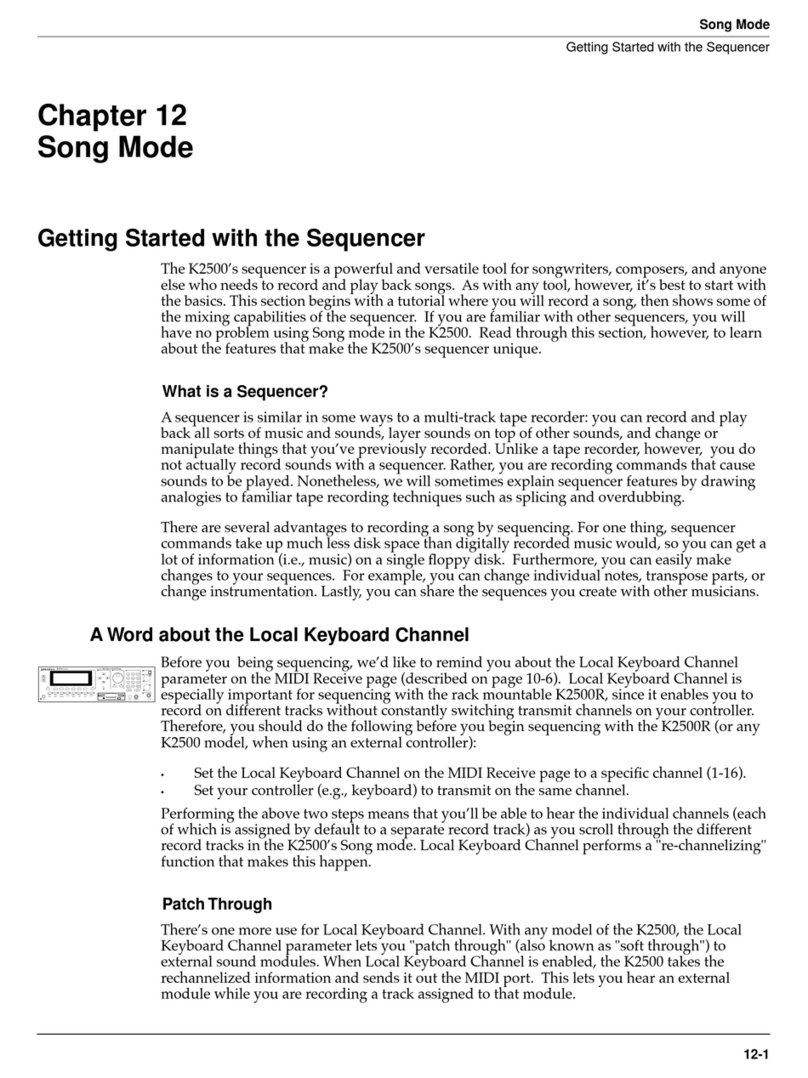
Kurzweil
Kurzweil K2500 - PERFORMANCE GUIDE REV F PART NUMBER 910251 CHAP... Getting started guide
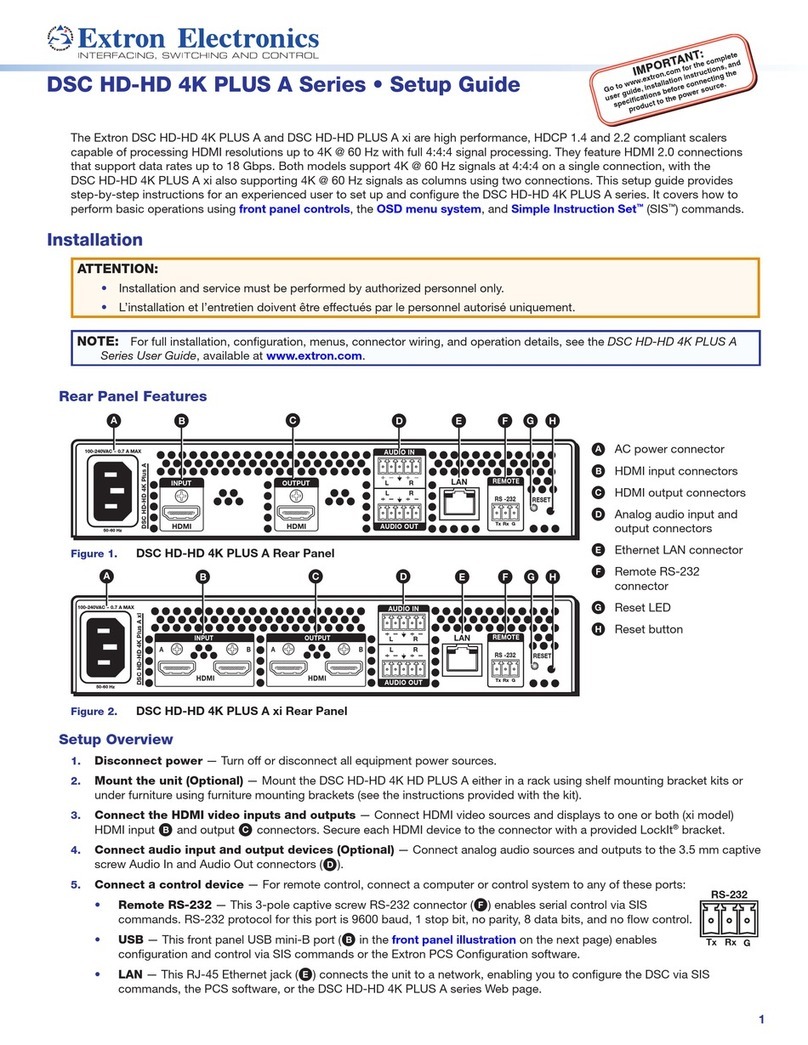
Extron electronics
Extron electronics DSC HD-HD 4K Plus A Series Setup guide

Sony
Sony UVW-1800P operating instructions

JBL
JBL Synthesis SDP-1 owner's manual
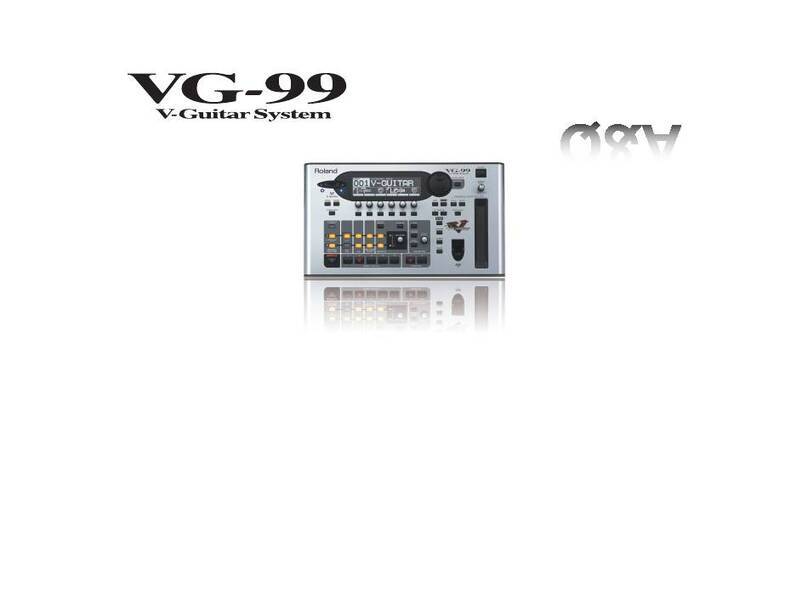
Roland
Roland V-Guitar System VG-99 Q&A

Setcom
Setcom MS-900SP Installation and user guide
